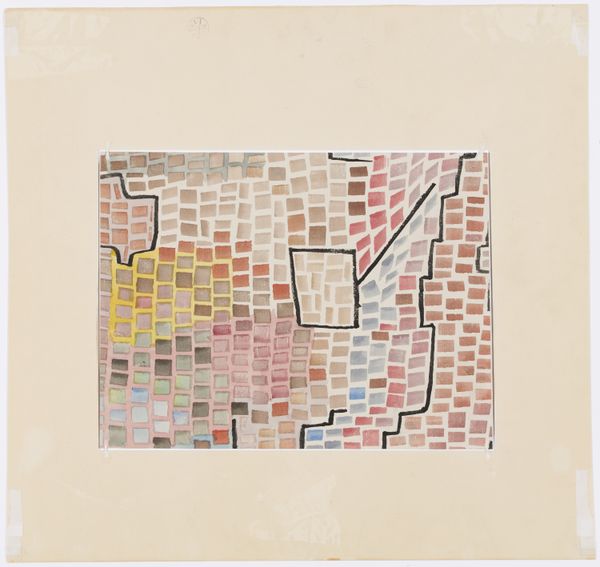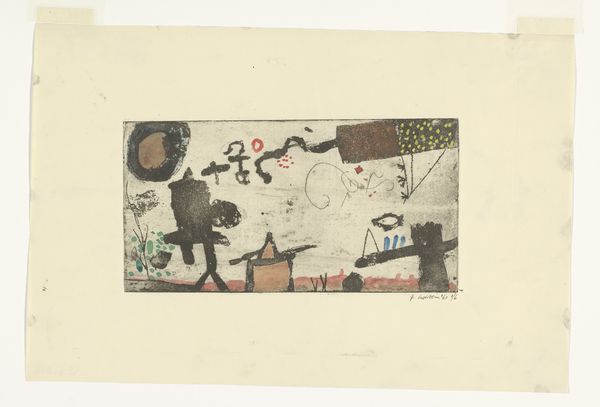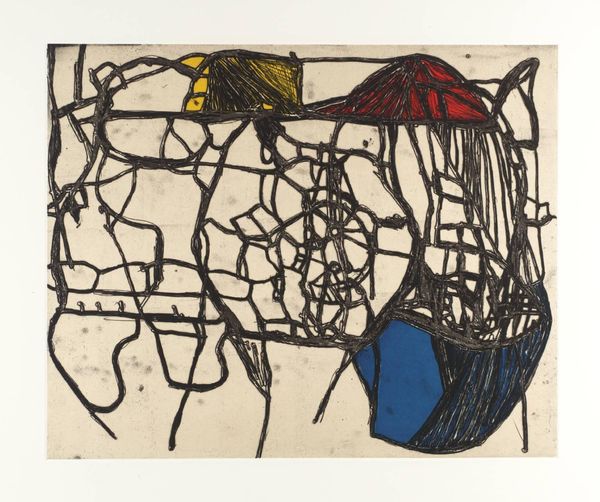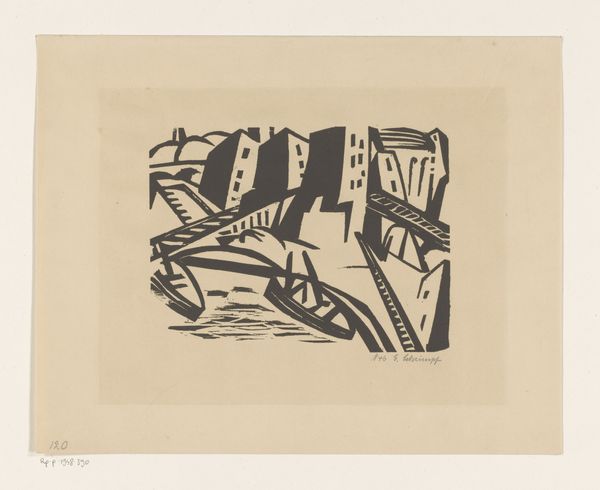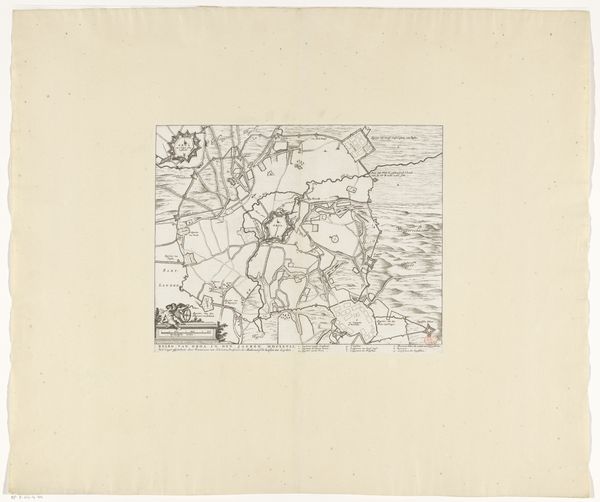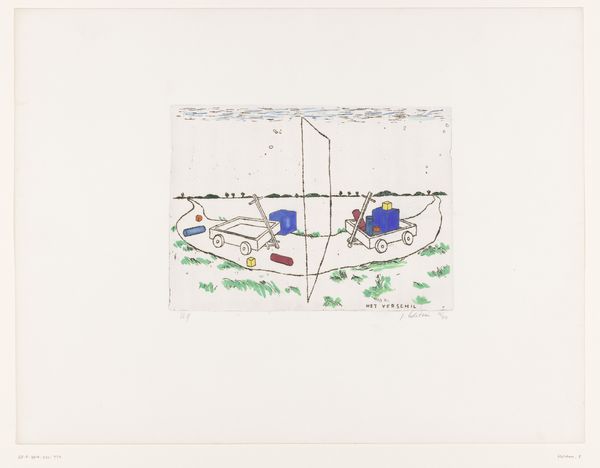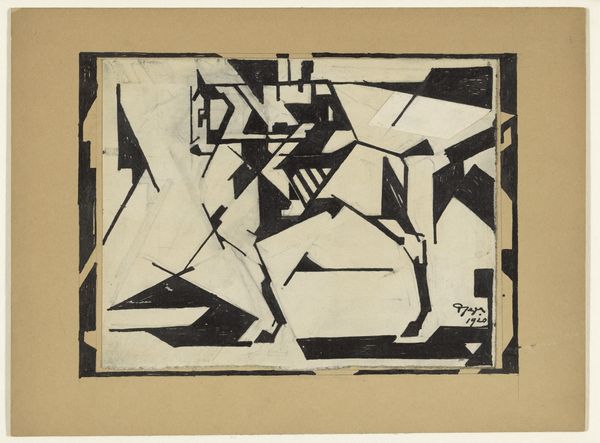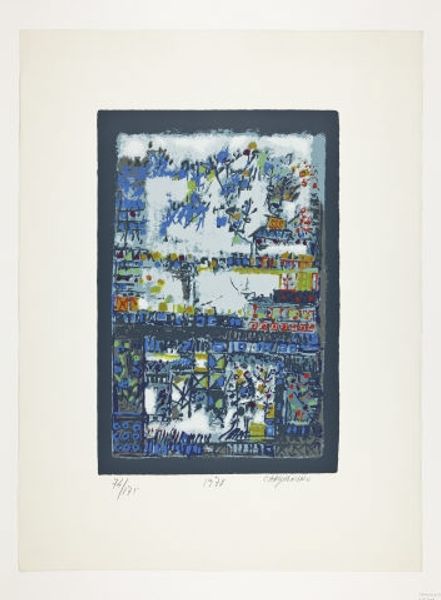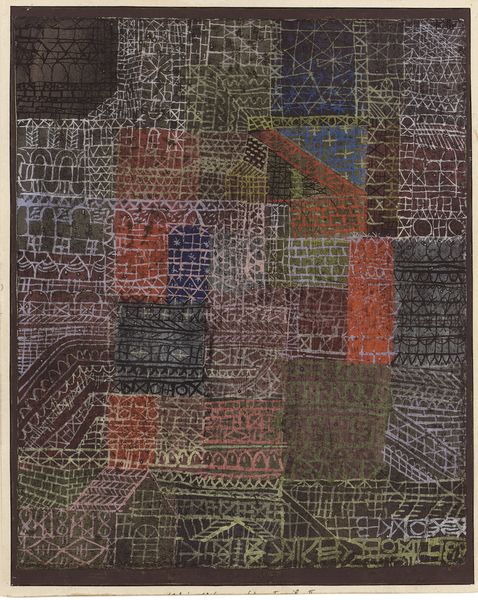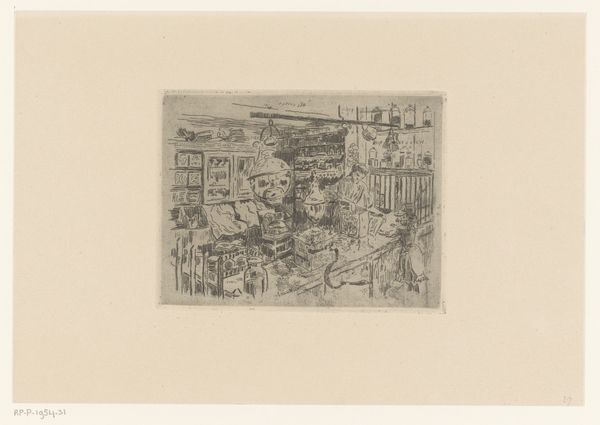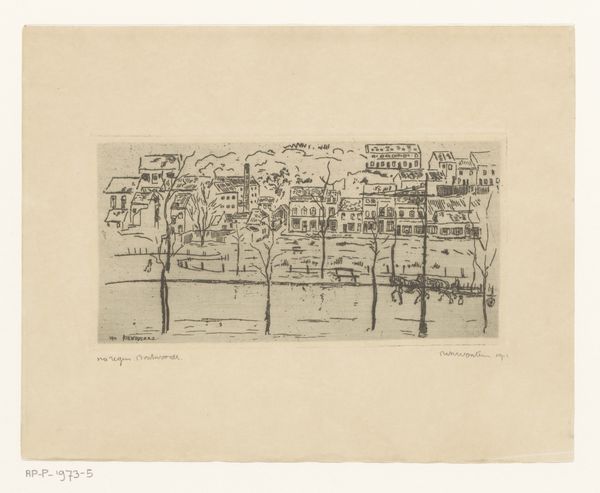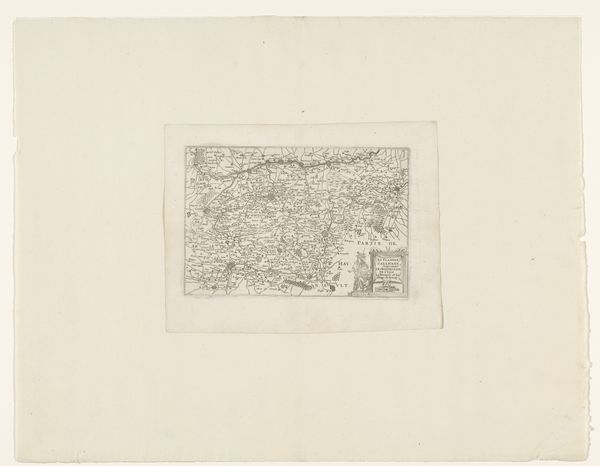
Copyright: Public Domain
Curator: Here we have Paul Klee’s “Fruchtbares geregelt,” which translates to something like “Fertile Order,” a watercolor and pen drawing from 1933. It's currently held in the Städel Museum. Editor: It's charmingly odd. Like a child's cityscape blueprint overlaid with fields of wheat. All rendered in incredibly delicate materials and hues. I'm struck by the muted colors. Curator: Yes, Klee's work from the 1930s often reflects the political turmoil in Germany at the time. Although abstract, pieces like this one can be seen as veiled commentary on the desire for order amidst growing chaos. Think about the Bauhaus being shut down. Editor: That’s a critical connection. The rigid shapes alongside those soft watercolors, made with pen and what I suspect is meticulously diluted paint—it speaks to a conflict between control and the fluid nature of things. The handmade qualities, the obvious labor involved, suggest a pushback against industrialization. Curator: Precisely. And Klee’s pedagogical role at the Bauhaus, coupled with the rise of the Nazi regime, undoubtedly influenced his art. He explored abstraction as a way to critique power structures, if subtly. "Fruchtbares geregelt," in particular, points towards an inherent contradiction. How does one regulate fertility, or creativity for that matter? Editor: The small scale contributes too. It is intimate work, yet hints at broader landscapes and social structures. Even the frame feels integral, part of its presentation and value as something precious, considered. Curator: And after being dismissed from his teaching post and labeled a "degenerate artist," Klee returned to Switzerland later that year. This artwork shows up in the tumultuous moment before he departed. Editor: So the act of creating such intricate order can itself be viewed as defiance? Despite its delicacy, it asserts a quiet strength through careful design and material control. Curator: Absolutely, and its reception reflects that tension. Was it an affirmation of structure or a lament for lost freedom? The questions it posed made it relevant then, and arguably still does now. Editor: Indeed. Looking closely at these layers, the blend of structure and ethereal washes is incredibly affecting. It really speaks to me about finding stability even when everything is unstable.
Comments
stadelmuseum about 2 years ago
⋮
Inspired by a trip he took to Tunis with August Macke in 1914, Klee developed an abstract pictorial language. From 1931 onwards, his geometric compositions increasingly gave way to dotted structures. In the place of a brush, the artist used stamps he frequently fashioned from the heads of nails and used to dab the paint onto the paper. Despite its non-representational depiction, the drawing "Fertility Tended" To sparks associations of house façades, trees or – as the enigmatic title suggests – a garden or park with various types of plants.
Join the conversation
Join millions of artists and users on Artera today and experience the ultimate creative platform.
